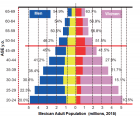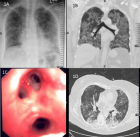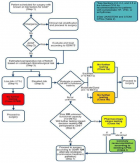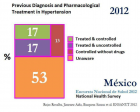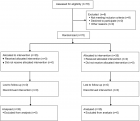About Sohag University
Sohag University
Articles by Sohag University
Chronic endometritis in in vitro fertilization failure patients
Published on: 1st December, 2020
OCLC Number/Unique Identifier: 8875583182
Introduction: Chronic endometritis (CE) is a common cause of infertility in asymptomatic patients and its diagnosis and treatments improved assisted reproduction technique outcome in most of the specialized centers. Diagnosis of CE in endometrial biopsy by Hematoxylin and Eosin (H&E) stain is hard to identify chronic inflammatory cells from the stroma and the use of plasma cells-specific stains is helpful.
Aim of the work: Evaluation of the use of CD138 in the identification of plasma cells in endometrial biopsy of patients with previous IVF trial failure.
Material and methods: Hysteroscopic and curettage endometrial biopsies from fifty-five females with previous IVF trial failure were stained with H&E and CD138 immunostaining for detection of plasma cells.
Results: Plasma cells were identified in 52.7% of cases by H&E and in 6/55 by CD138 immunostaining. CD138 is more sensitive in detecting plasma cells in endometrial biopsy than H&E stain. There was a significant statistical correlation between CE and abnormal uterine bleeding, abortion and primary infertility (p > 0.5).
Conclusion: Diagnosis of CE is helpful in infertility patients with IVF trial failure to improve the outcome of the maneuver. CD138 is more sensitive for plasma cells specially in endometrial biopsies than H&E.
Immunohistochemical expression of Nestin as Cancer Stem Cell Marker in gliomas
Published on: 11th November, 2019
OCLC Number/Unique Identifier: 8457474432
Background: Gliomas represent the most frequent primary tumors of central nervous system (CNS), contributing to more than half of the incidence of brain tumors. Cancer stem cell markers (CSC) identify a group of patients at high risk for progression. Nestin is an intermediate filament (IF) protein was first described as a neural stem cell/progenitor cell marker. Nestin-positive neuroepithelial stem cells are detected in the subventricular zone of the human adult brain and they remain mitotically active throughout adulthood. The expression of Nestin in gliomas has been suggested to be related to dedifferentiation, improved cell motility, invasive potential and increased malignancy. This study aims to investigate Nestin immunohistochemical expression in different types of glioma and its correlation with different clinicopathological parameters.
Materials and Methods: Nestin immunostaining was studied in 60 specimens of glioma using avidin-biotin peroxidase method.
Results: Nestin was strongly expressed in 11/60 (18.33%), moderately expressed in 29/60 (48.33%) and weekly expressed in 15/60 (25%) of studied gliomas. A significant positive correlation was found between Nestin expression and histologic type (p < 0.001) and increasing grade of gliomas (p < 0.001).
Conclusion: Increased Nestin expression is correlated with tumor progression, increasing grade and poor prognostic parameter of glioma. Nestin is a useful marker for detection of CSC in high-grade glioma which is responsible for resistance to chemo-radiotherapy and may serve as a predictor for patient outcomes.
Immunohistochemical expression of p53 and Fox A1 in epithelial ovarian cancer
Published on: 20th May, 2022
Background: Ovarian cancer (OC) is the fifth cause of cancer mortality in females. There were an estimated 300,000 new cases of OC diagnosed worldwide in 2018, corresponding to 3.4% of all cancer cases among women. The high mortality rate of OC attributed to asymptomatic growth of the tumor leads to its diagnosis at advanced stages. About 85% - 90% of OC are epithelial including serous, endometrioid, clear cell, and mucinous carcinoma. Aim: To study the immunohistochemical (IHC) expression of FOXA1 and p53 in epithelial OC and its association with prognostic indicators such as age, tumor size, stage, grade, and histological type.Materials and methods: The study included 52 cases with EOC from the pathology department, faculty of medicine, Aswan, and Sohag Universities, in the period from January 2017 to December 2019. This study involved 52 patients with OC and a median age of 53 years. Different histological types were included as 37 serous, 12 mucinous, 1 case endometroid 2 cases clear cell OC. The study cases were classified into 22 Grade I, 16 Grade II, and 20 Grade III. About 22 cases were at stage I, 9 at stage II, 11 at stage III, and 10 at stage IV. Tissue sections were stained using the IHC technique with FOX A1 at a dilution of 1:100 and p53 at 1:100. Results: A statistically significant correlation was found between FOX A1 expression and advanced patient's age, high grade, advanced stage, ruptured capsule, and ascites, regardless of tumor laterality. No significant association was found between p53 immunoexpression and the same clinic-pathological parameters although p53 was associated with serious type. Conclusion: FOXA1 immunoexpression in EOC is considered a poor prognostic factor in EOC. FOXA1 could be a potential therapeutic target and prognostic marker in EOC.

If you are already a member of our network and need to keep track of any developments regarding a question you have already submitted, click "take me to my Query."






